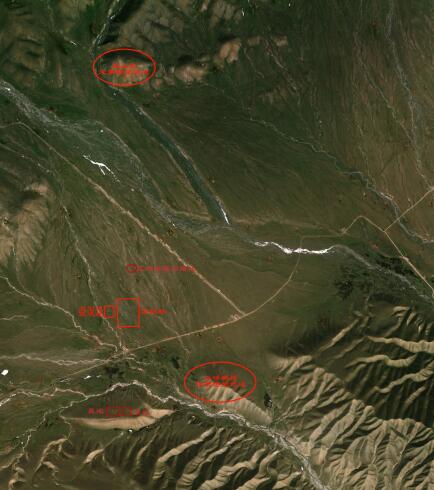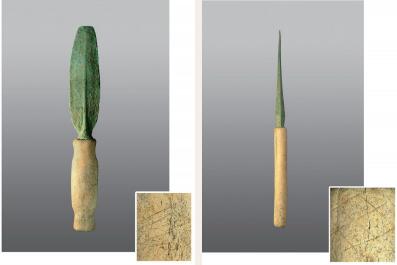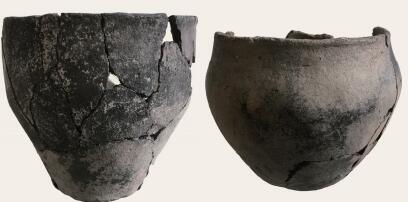Walled Settlement in the Bronze Age was found at Husta Site, Xinjiang in 2017
Husta Site is located 40 kilometers to the northeast of Wenquan County in Bortala Autonomous Prefecture, Xinjiang Autonomous Region. Fieldwork, including intensive survey has been in progress since 2013, by the “Bronze Age archaeological Survey along the reaches of the Bortala Valley” project which is led by The Institute of Archaeology, Chinese Academy of Social Sciences (IA CASS). From 2016, the excavation was carried out, and a large-scale walled settlement in the Bronze Age was found.

Distribution map of the site complex
Archaeological discoveries and achievements
The 2017 excavation was focused on Har-Oro (Har-Oro is a Mongolian term meaning black hilltop, Heishantou in Chinese Pinyin) and alluvial fan area. The excavation of alluvial fan area was carried out surrounding a walled settlement. It covered an area of about 5,000 square meters, including the main rectangular building remain, front room, western room, courtyard and surrounding walls, it is the most massive building complex of Bronze Age known to the north slope of West Tianshan Mountains. What seems to have been a ritual pit was found in the southwest side of the rectangular building remain. A human skeleton recovered inside the pit was associated with pottery and two bronze wares, a drill and a dagger, both with well-made criss-cross decoration on the surface of the handles, It is the best-preserved bronze weapon with horn-handle found in Eurasian steppe.

Distribution map of the core area
A U-shape wall covering east, west and north lasted 450 meters to the north of the major building. The wall structure accorded with the wall of the major building, with entrance, gate house and pier, which remain to be confirmed in the future excavation. The walls, the major building, together with other constructions in this settlement made up the core of Husta Site, which covered an area of more than 100,000 square meters. It can be speculated that this is a central settlement in the early Bronze Age. It is the first time an early Bronze Age settlement has been found in Xinjiang.
There are also significant achievements in the excavation of Har-Oro Site. The two house remains found here were similar to that found in alluvial fan area in structure and constructing technique. The unearthed pottery also displayed the conformity in time with the large-scale building complex. Two complete horse heads were also found on the floor of the house, offering substantial material for the research of domesticated horse origin in China.

The major building remains
The 12 bronze wares unearthed in Husta Site were mainly weapons, tools and decorations. The semiquantitative analysis by PXRF of the 11 bronze wares excluding the beads and the surface observation shows that:
10 pieces of them were tin-bronze, with the tine content making up 10-16 % and a small portion of As and Zn. It indicates that the alloy technique of these bronze wares reached a mature and advanced level. By comparison with the bronze ware found in Erlitou Cultural Site in the central plain of the same period, it infers that the alloy type of the Erlitou was complicated, including lead and arsenic apart from tin and the portion also varied dramatically, showing that the alloy technique was yet to be developed in Erlitou.

Griding disk,griding stone and the bronze dagger
The bronze knife was the only arsenical bronze, with arsenic content reaching 5%. The alloy type was different from others and it exhibited steppe style, seeming to be an introduced object.
The horn-handle dagger was cast into shape, and the rest 10 pieces might be shaped by forging, with prints of forging tools left on the surface.

The horn-handle dagger
There is not enough evidence to show these bronze wares were local productions. However, the difference in processing and alloy technique showed that these bronze wares were mostly influenced by the Eurasian Steppe style.

Pottery jar
The Har-Oro site and Bag Husta site are within sight of each other, which is surrounded by the walled settlements. It might be the power center of this large area, providing valuable material for the archaeological study of the social development and the social organization in Bronze Age in this area and even the Eurasian Steppe. The unearthed bronze wares and horse heads bear great significance to the study of cultural communication between east and west and the formation of Silk Road. (Translator: Yuan Yuan)

